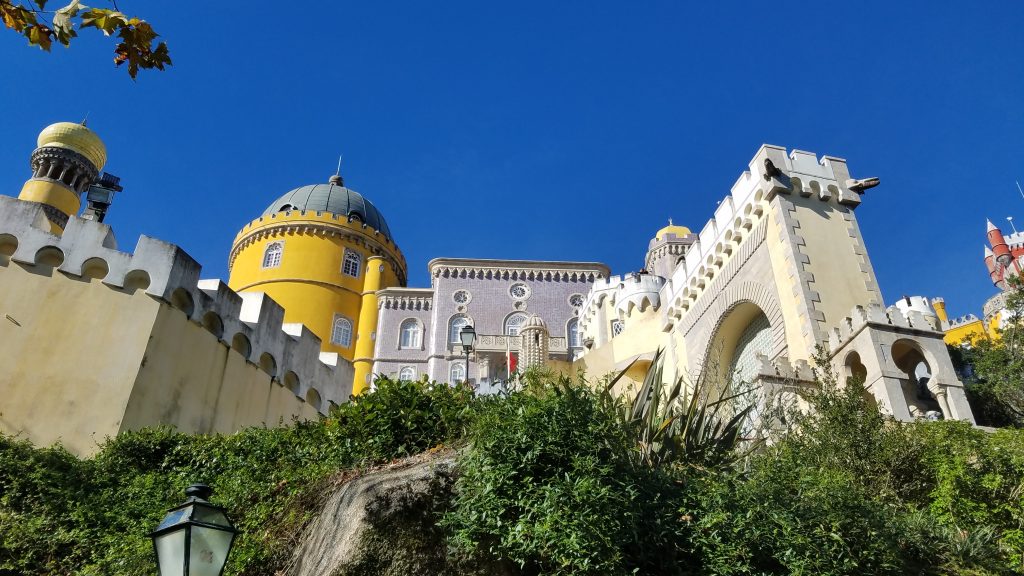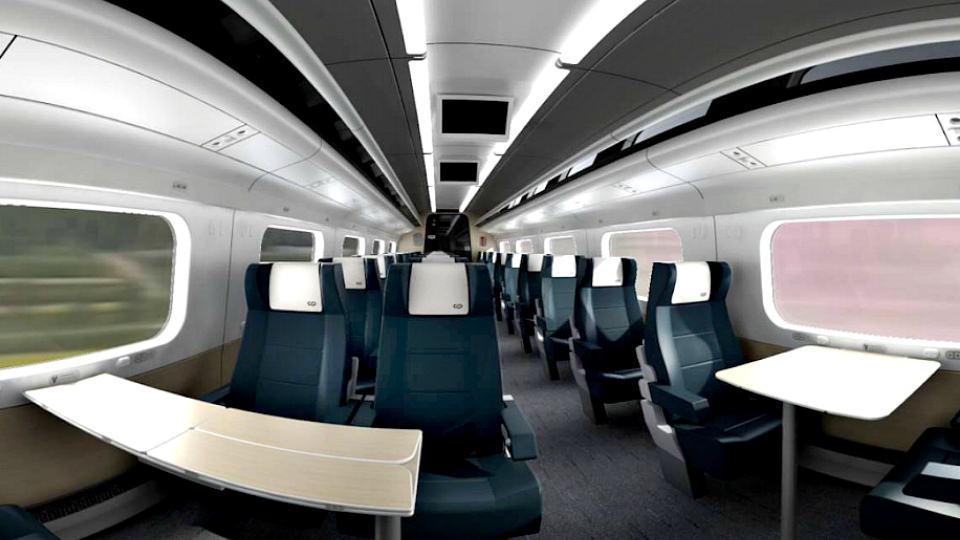
by Ron Bernthal
In 2020 the government of Portugal has confirmed its intention to press ahead with rail investments of more than $12 billion, as part of a larger national stimulus program. The highlight of the package, however, is the revival of a proposal for a true high speed rail link between Lisbon and Porto, which has been on going subject for more than two decades.
It has been more than 20 years in the making but Portugal’s plan for a true high-speed train route connecting its two major cities of Lisbon and Porto is finally back on track, maybe. Infrastructure minister Pedro Santos Nunes made the announcement as part of the government’s National Investment Program 2030, which has allocated $52 billion to modernize the country’s rail infrastructure.
Although the much-anticipated high-speed train link will cost about $5.4 billion and enable trains to travel at 180 mph, thus more than halving the current travel time between the cities to an hour and 15 minutes, there already is a rather fast rail connection between Lisbon and Porto called the Alfa Pendular. Operated by Portuguese Railways, it is the most convenient way to travel between the two cities.
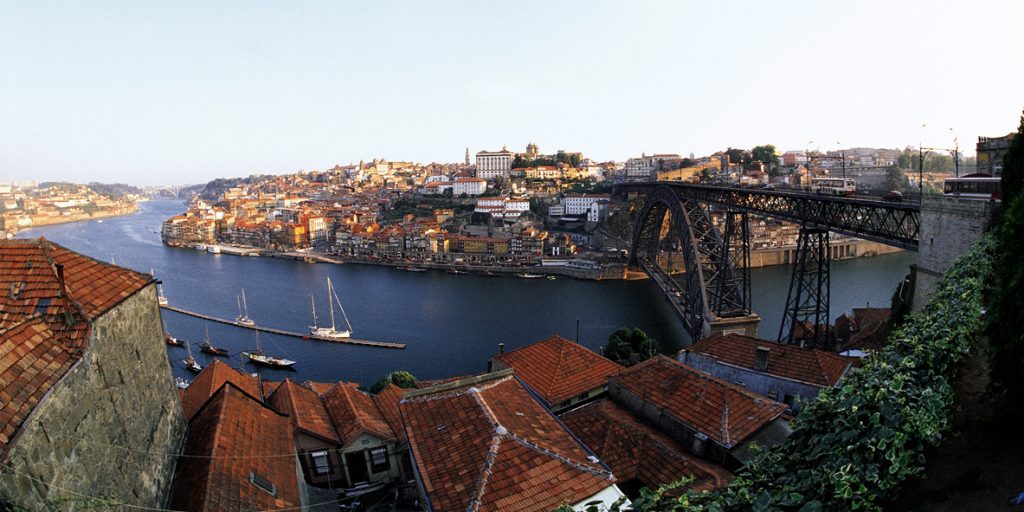 Porto’s historic city center is just a few hours away from Lisbon using the fast Alfa Pendular express train (photo Porto Convention & Visitors Bureau)
Porto’s historic city center is just a few hours away from Lisbon using the fast Alfa Pendular express train (photo Porto Convention & Visitors Bureau)
The Alfa Pendular train was completely renovated March 2017, and now offers travelers even more comfort. The current rail service on the line travels the 206 miles in less than three hours, and offers first and second-class accommodations, with five daily departures. The Alfa provides comfortable, spacious seats with generous legroom and individual power sockets, a wide range of audio and video channels, and is equipped with nice bathrooms, a dining car, and a small bar.
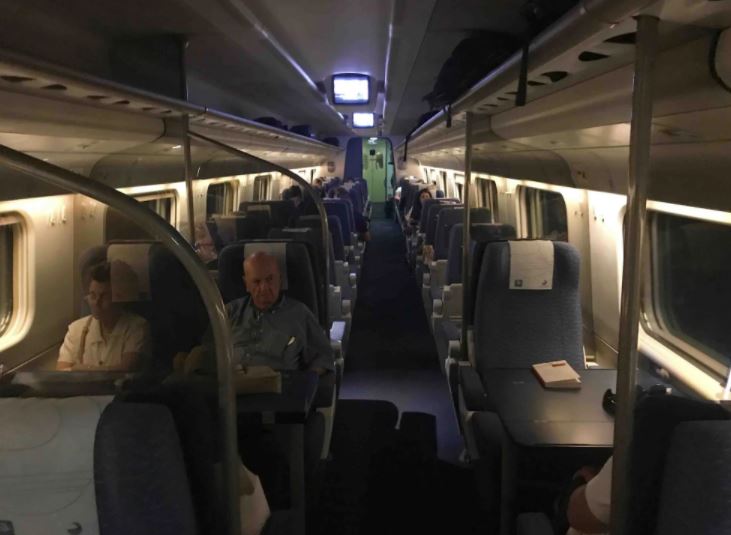
Interior of Alfa Pendular (photo Liam Henderson, TransportingCities)
Because of the financial hit that all countries took from the Covid-19 pandemic it is hard to say just how much money will now be available for the expensive 10-year rail investment plan recently announced. Will the creation of more metro and local train lines across the country, and rail station renovations, as well as new international routes connecting Portugal to Spain, now be possible following the economic issues caused by Covid?
Lisbon’s Oriente Station was designed by the noted Spanish architect Santiago Calatrava. The Alfa Pendular has several departures a day from this station for Porto.
Some politicians in Portugal believe it will be more difficult to start on the new high-speed Lisbon-Porto rail project now because the pandemic is still ongoing, and leisure and business travel in still unpredictable. Others say that the failure of building a promised new international airport at Ota, 30 miles from Lisbon, which never got off the ground, should come before any new high speed track construction takes place.
However, infrastructure minister Santos is feeling very positive about the current proposal. “We’re not inventing anything new,” said Santos. “Twenty years ago my predecessor, João Cravino, had already arrived at this conclusion. But unfortunately, we wasted a lot of time.” Santos believes that the funds will be available to complete the railway’s master plan, including the new high speed Lisbon-Porto link.
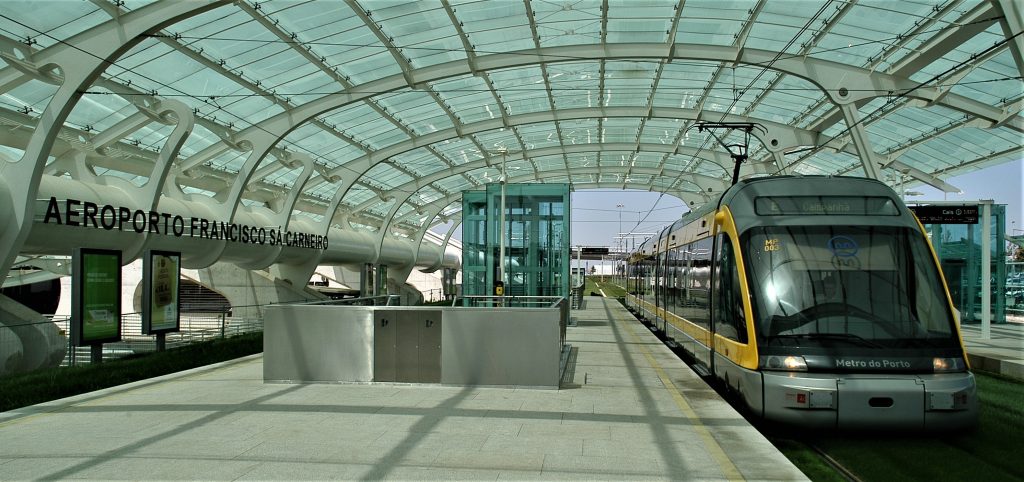
Other government officials, especially tourism authorities and hospitality leaders, firmly believe that the money invested in the country’s future rail service infrastructure (including a faster express train service between Lisbon and Porto, will help Portugal’s tourism industry to maintain record levels of business and leisure visitor arrivals, especially when international travel restrictions are lifted and the country’s two major cities are again filling up their hotels, restaurants, beaches, wineries and cultural attractions with unmasked visitors.
